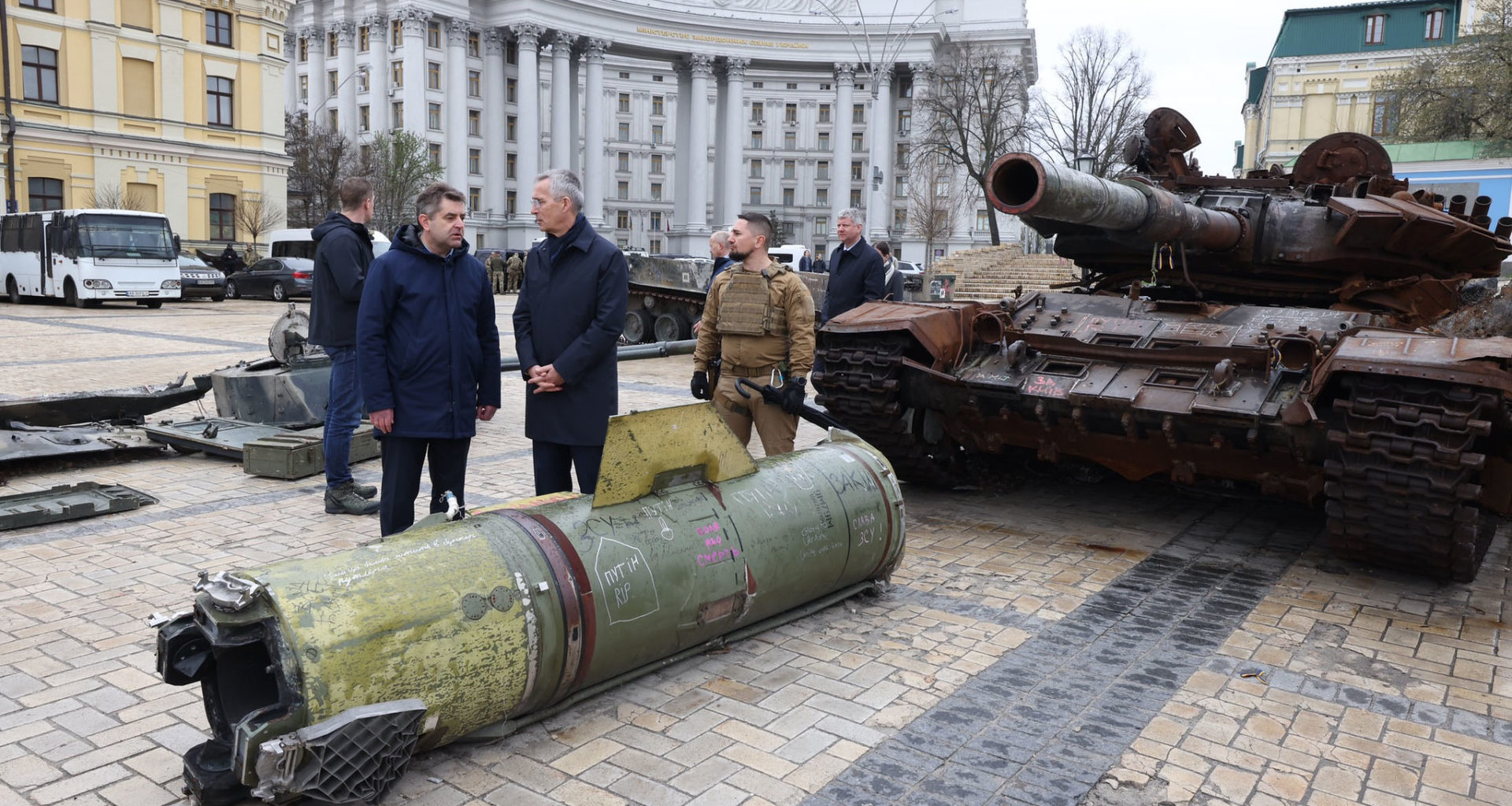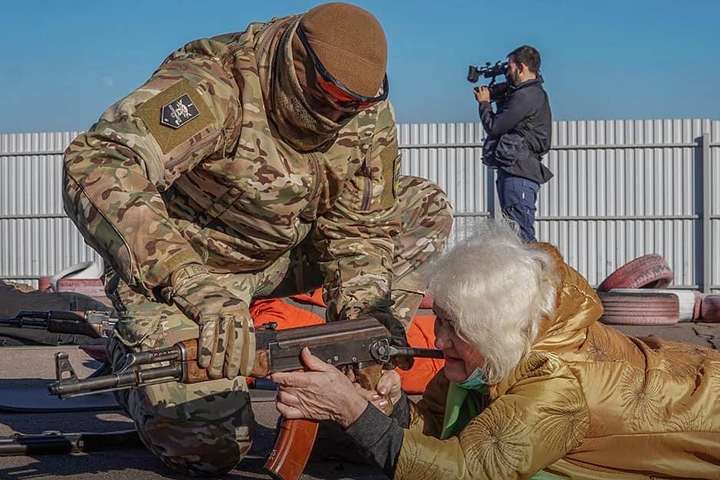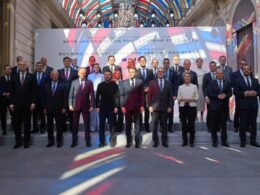Once prized as a pillar of post-war stability, the NATO alliance now confronts serious doubts about its internal cohesion, military strength, and political willpower facing an ascendant Russia. The war in Ukraine exposed festering internal divisions and years of neglected military capabilities. Fundamental questions now loom about NATO's future viability as a bulwark against Russian expansionism. With NATO credibility in tatters after failing its core mission to counter Russian aggression, nothing less than a fundamental reboot may restore NATO's purpose and capabilities in these turbulent times.
The war
The perception of the war impacts how the actions of NATO and its member states are evaluated. As I have repeatedly argued, it is not a “Russia-Ukraine War” but a broader confrontation between Russia and the West.
Russia’s nature as an imperial power should be undisputable. It has expanded continuously for centuries at the cost of its neighbors. Even as the Soviet Union was being dissolved, Russia set about re-establishing its control over the post-Soviet space. Its recent calls for a sphere of influence and the right to veto the decisions of independent and sovereign countries are only a continuation of its past and present nature. It will continue to expand until stopped and contained.
Secondly, the Russian Federation Russia is seeking strategic parity with the US. Ukraine is only a small – but crucial – object in its strategy to achieve Great Power status. Ukraine unlocks the economic, technological, demographical, and geostrategic preconditions to establish the power needed to exercise its influence on the European continent.
Russian foreign policy focuses on its conflict with the West. Not Ukraine.
It’s reflected in its history. It is manifested in President Putin’s article ”On the Historical Unity of Russians and Ukrainians“ from July 2021. It is stated in the article “Where has chaos gone? Unpacking instability” by the former advisor of President Putin, Vladislav Surkov, published only three months before the full-scale invasion. It is echoed in Russia’s “ultimatums” to NATO and the US on 17 December 2021. It is not least stated in Russia’s new foreign policy doctrine identifying the West as an existential threat.
Russia has strenuously argued that it is at war with the West. It accuses the US, NATO and the EU are waging an information war, economic war, war of proxy and total war against Russia. Their sanctions are portrayed as an act of aggression.
What is disinformation to most people, is Russia’s strategic appraisal. Only that it mirrors its own aggressions and threats on the West.
Everything Russia has written, stated, or done since 2007 is linked to NATO. It has long been waging a Hybrid War against the West. The war in Ukraine is only a part of its broader confrontation with the US and NATO.
According to NATO, “Peace in the Euro-Atlantic area has been shattered. The Russian Federation has violated the norms and principles that contributed to a stable and predictable European security order. The Russian Federation is the most significant and direct threat to Allies’ security and to peace and stability in the Euro-Atlantic area.” “We cannot discount the possibility of an attack against Allies’ sovereignty and territorial integrity.”
In July, Colonel-General Andrey Mordvichev, who has been commanding the Central Military District and Russian Central Grouping of Forces in Ukraine, indicated that Russia might have plans to expand the war in Ukraine to Eastern Europe. When asked how long the Ukraine war will last, Mordvichev responded that he believes Russia has to attack Eastern Europe. Ukraine is just a stepping stone to other attacks.
There is an increasing consensus in Europe that Ukraine is defending European security and stability. It is NATO’s war to fight. Russia has identified it as its adversary. More importantly, using both military and non-military means, it is waging war both on and next to NATO’s territory.
Why did the war start?
There is no single explanation for why the war started in 2014 and turned into a full-scale eight years later. Some factors, however, stand out.
- Russia is an imperialistic country with Great Power aspirations. These cannot be fulfilled without controlling Ukraine and Belarus. Equally important, NATO is hindering its westward expansion and ambition to re-establish a sphere of special influence over Eastern Europe.
- Ukraine selected a Western trajectory, embracing democracy instead of autocracy and the “Russian World.” Its reform and integration process with the EU (and later NATO) was gaining momentum. Its security and defense sectors were getting stronger. Russia needed to stop Ukraine from becoming a NATO member.
- The situation in the West presented Russia with a unique window of opportunity. The US was perceived as more divided than ever. The transatlantic link was weakened after the presidency of Donald Trump. Additionally, the EU was struggling with internal discord and the fallout from Brexit. NATO was, not least, historically weak after three decades of underfunding, downsizing, reorganization, and streamlining. It lacked leadership.
- The West signaled weakness. By default, it sought a political solution to a Russian-instigated war while immediately taking all military options off the table. It signed up to a “peace agreement” that could never bring peace but ensured that the West remained detached and Ukraine weak while supporting Russian diplomatic efforts and disinformation.
The US and Europe demonstrated the level of weakness and discord Russia needed to escalate a low-intensity conflict into a full-scale war.
Why did the war escalate?
NATO was established on 4 April 1949 and ensured nearly 65 years of peace in its area of responsibility. It played an essential role in containing the USSR and stopping the Cold War from turning into a hot war.
The Alliance failed, however, on 20 February 2014.
The date is defined as the start of the war. It also symbolizes the transition of the Hybrid War from phase 1 (shaping) to phase 2 (active) and the continuation of Russian aggressions that had been ongoing in Ukraine, the EU, its member states, and the US for years already.
It marks the moment the Russian Federation decided to openly challenge the West and the rule-based world order using all tools at its disposal (short of nuclear arms), both military and non-military means. It escalated its campaign to undermine the US and Europe.
It happened because NATO deterrence failed.
Deterrence isn’t decided in Washington or Brussels. It is decided in the Kremlin. It only works if the enemy – because it is what Russia has selected to become – believes that the Alliance has the political will and military capacity to defeat it in battle.
Russia no longer believes that to be the case.
During the Cold War, NATO responded to all military provocations.
It recognized that the USSR continuously tested the Alliance’s will and capacity to defend democracy. It acknowledged that an immediate military response to each transgression was crucial to avoiding strategic miscalculations.
After the collapse of the USSR and the end of the Cold War, NATO hardly responded to any of Russia’s provocations and transgressions.
After 15 years of testing NATO’s political will and military capacity, Russia made the strategic miscalculation the Alliance had averted for nearly 65 years. A tremendous strategic blunder by both President Putin as well as the 30 Western Heads of States that failed to dissuade him.
While the Alliance is militarily superior to Russia, it lacks the political will to stop a war threatening its security, stability, and prosperity. Russia sees the West as weak for not responding militarily to any of its provocations after 2007.
NATO's failings

Lack of political will and military capabilities
When Russia launched the full-scale invasion on 24 February last year, it was banking on NATO not acting according to its strategic concept. It assumed that it would fail to agree to intervene militarily: “to stop ongoing conflicts where they affect Alliance security.”
It was proven right.
On 24 March 2022, the Heads of State of the 30 NATO Allies met to address Russia’s aggression against Ukraine, the gravest threat to Euro-Atlantic security in decades. President Biden stressed the crucial importance of absolute unity among NATO allies. The outcome – the decision to provide non-military support only – resulted from the “weakest links” being allowed to define the Alliance's highest level of ambition.
It was the ultimate demonstration of a lack of political will. Equally important, it was a continuation of NATO policy from 2014.
It not only failed to deter Russia’s war of aggression, but it also failed to respond to a war that fundamentally was directed against the West out of fear of escalation, nuclear confrontation and – on the other end of the scale – fear of the consequences of a Russian defeat and its potential collapse.
While NATO is militarily superior to Russia and has the means to end the war, it lacks the political will to use military power.
Three decades of underfunding, downsizing, and streamlining have left the Alliance with military capability gaps. It lacks the heavy weapons and ammunition needed to fight a protracted, high-intensity war. Member states lack Air Defence. Its Sea Power has been greatly reduced. It is by no means prepared to fight the evolving drone war. Both the US and Europe lack a Defence Industry capable of quickly ramping up the production of the weapons and ammunition needed to sustain the war and generate new capabilities.
Lacking sustainability, it is also rendered unable to provide Ukraine with everything it needs to defend European security and stability.
Ironically, if NATO had decided to defend Ukraine shoulder-to-shoulder with its Ukrainian brothers-in-arms, lack of sustainability would not have been a problem. A joint effort would have ended the war “before it even started”.
Discord over NATO’s level of ambitions
In 2022, after more than eight years of war – and after Russia decided to escalate a low-intensity conflict into a full-scale war - Eastern Europe argued publicly in favour of greater NATO involvement. Poland, the Czech Republic, and Slovenia put forward a 10-point plan to save Ukraine. The Polish Prime Minister stressed that if this did not stop the war, then NATO should go further and protect the people of Ukraine.
Instead of committing to do more – or rather do Crisis Management as envisaged in its 2010 Strategic Concept - the new NATO’s Strategic Concept-2022 became a commitment to do less.
The member states had for years already walked away from their pledge to invest in collective security and defense, to close existing capability gaps, and to provide the forces NATO required to conduct operations. After the war started, they not only chose to walk away from their Crisis Management commitment but also walked back on their commitment to defend Freedom of Navigation and not least, to fully meet the security concerns of its easternmost allies.
This has triggered member states to respond differently to the war. Eastern Europe is acting in the spirit of NATO’s 2010 Strategic Concept, which the Alliance at large decided to abandon. They are taking strategic risks emptying their stockpiles in support of Ukraine while, in principle, also defending themselves in Ukraine. Poland’s urgent investment in new and improved military capabilities is not a testimony of trust in the Alliance. It has recognized that a strong national security and defense sector is the only guarantee for its sovereignty and independence.
The eight signs of discord within NATO
NATO stepped back from the second of its three essential core tasks out of fear of an escalation of the war and a nuclear confrontation. This marks a fundamental shift in strategy, raising legitimate doubt about the Alliance’s political will and military capacity to solve its first essential core task: Collective Defence.
If it is unwilling to manage developing crises that have the potential to affect Alliance security before they escalate into conflicts and to stop ongoing conflicts at its borders where they affect Alliance security out of fear, how will it find the courage to defend its member states when the stakes are even higher?
The war has proven that NATO's will and capability – its level of ambitions – and member states political commitment is fluid.
From a Russian perspective, this underlines its impression of the West as weak and divided. It confirms that its nuclear “fait accompli” strategy works perfectly. More importantly, lacking the will to employ conventional forces, raises questions about the validity of NATO’s nuclear deterrence and the threat of Mutual Destruction. Inaction also validates the Hybrid War strategy and its efforts to manipulate the West to make decisions that serve Russian interests.
How can the Alliance deter future conflicts and wars when it walked away from Crisis Management – one of its three essential core tasks - in the face of Russian aggressions?
Discord over strategy
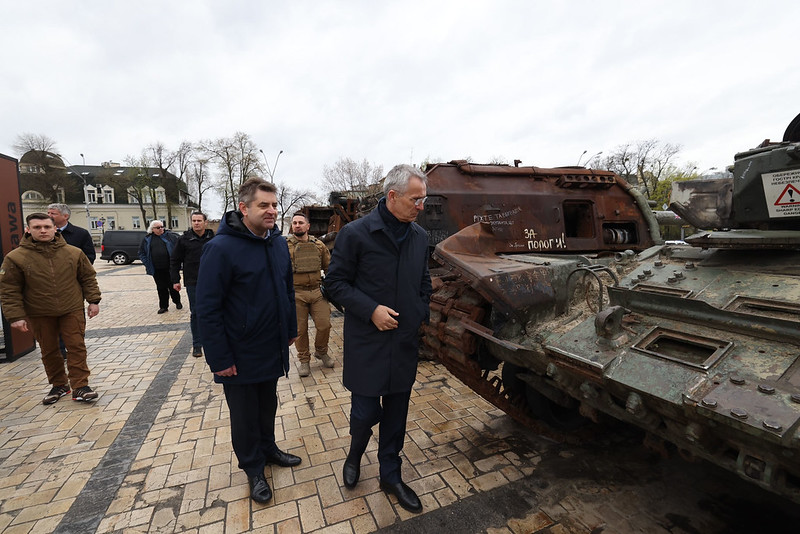
The West does not agree on the scale and scope of the war. What many describe as a “Russia-Ukraine war” is seen as a broader confrontation between Russia and NATO by the member states that know the Russian Federation the best.
NATO has failed to establish a common strategy or its red lines. The allies do not have a shared vision about how the war ends. Some push for negotiations and concessions, while others push for a Ukrainian victory on the battlefield.
All have signed up to a commitment to build a “Maginot line” along its eastern flank, renewed their pledge to invest a minimum of 2% of GDP annually on defence, and endorsed a Defence Production Action Plan to accelerate joint procurement, boost interoperability and generate investment and production capacity. However, nine years later, most have failed to fund the efforts.
The Alliance has not signed up to Ukraine’s vision of a victory and is not setting up Ukraine for victory. The inflow of weapons and ammunition is not only slow and incremental but also lacking. Some empty their stockpiles in support of Ukraine (and their own security) while others provide a bare minimum of what they have in store to preserve their readiness. Nearly ten years into the war, the US and Europe are still in the process of ramping up the production of weapons and ammunition. 19 months into the full-scale war – and nearly 4 months into the counteroffensive - Ukraine is still missing crucial capabilities needed to evict Russian forces from its territory.
Worse still, donors have imposed restrictions on where the weapons can be employed. Ukraine is being denied the opportunity to destroy Russian military capabilities attacking civilians, critical infrastructure, and its military capabilities from Russian territory.
The Allies do not see eye-to-eye on what weapons Ukraine should receive. The UK has pushed for high-end capacities such as main battle tanks, long-range cruise missiles, and combat aircraft, whereas the US and Germany have persistently shown great reluctance.
True to its decision not to intervene militarily (to ensure the security of the Alliance) – and despite member states calling for the Alliance to protect Ukraine’s population with its “shields” – NATO is still unable to establish the consensus needed to close the sky and break the maritime blockade.
Consequently, NATO remains unable to fundamentally influence the outcome of the war. Even if Ukraine were to liberate all occupied territories, Russia would remain able to destroy its economic foundation: the destruction of critical infrastructure, its industry, its agricultural export, its maritime cluster, and its access to its maritime and human resources.
How can the Alliance establish effective strategies to deter future conflicts and wars when unable to articulate the scale and scope of the confrontation?
Europe’s failure to meet its commitment to NATO
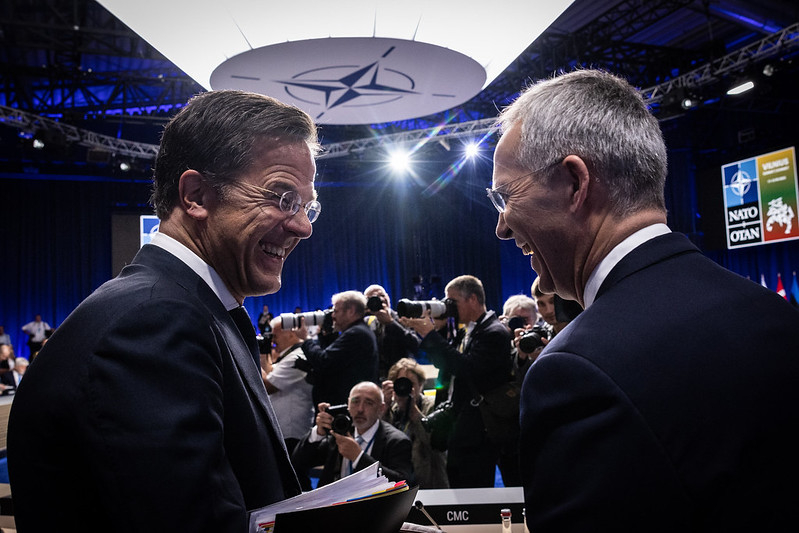
In 2006, NATO Defence Ministers agreed to commit a minimum of 2% of their Gross Domestic Product (GDP) to defense spending to continue to ensure the Alliance's military readiness. Since each member's defense capacity impacts the overall perception of the Alliance's credibility as a politico-military organization, this target indicates a country's political will to contribute to NATO's joint defense efforts.
In contrast – and indicative to the challenge the Alliance is facing - at the Wales summit, eight years later, the NATO members decided on an ambition – not a binding pledge – to halt any decline in defense expenditure; to increase defense expenditure in real terms as GDP grows; and to move towards the 2% guideline within a decade to meet their NATO Capability Targets and fill NATO's capability shortfalls.
Instead of strengthening the defense budget and closing capability gaps as an urgent response to war at its borders, the member states decided to continue underfinancing their force structure for ten more years.
All other measures decided at the summit would, consequently, come to “nothing” for lack of funds. Capability shortcomings would remain open despite:
- NATO's concerns about Russia’s aggressive actions against Ukraine;
- Russia's “pattern of disregard for international law, including the UN Charter;
- Russia's behavior towards Georgia and the Republic of Moldova;
- Russia's violation of fundamental European security arrangements and commitments, including those in the Helsinki Final Act;
- Russia's long-standing non-implementation of the Conventional Armed Forces in Europe Treaty (CFE);
and Russia's use of military and other instruments to coerce neighbors.
Europe’s unwillingness to meet its defense budget commitment has been a matter of US frustration for years. While former President Trump was the most vocal critic of European defense spending by far, he only reiterated concerns raised by Presidents George W. Bush and Obama.
Nine years after the Wales summit – and despite the constant escalating war - only 11 out of 31 countries have met the declared goal of 2% defense expenditure as a share of GDP and 20% equipment expenditure as a share of defense expenditure. 5 out of 31 meets neither of the two requirements.
How can a military Alliance survive if its member states ignore their shared commitment to invest in collective defense even when at war?
US failure to meet its commitment to NATO

Credit: president.gov.ua
The contrast between the recent statements by NATO’s Secretary General, Jens Stoltenberg, and US Republican presidential candidate, Ron DeSantis, highlight the US failure to fully commit to the Alliance: “NATO’s essential and enduring purpose is to safeguard the freedom and security of all its members.”
Where Stoltenberg stresses that supporting Ukraine is in NATO’s security interest and that Ukraine’s future is in the Alliance, DeSantis argues against Ukrainian NATO membership because it only adds obligations but no benefits. In a situation where NATO is openly challenged by the Russian Federation and is exposed to its war in Europe, he fails to see the link between Ukraine’s defensive battle, European and US security, and NATO’s essential and enduring purpose.
Unfortunately, he isn’t the only American to fail to connect the dots.
Vivek Ramaswamy, one of the top three candidates for the Republican Party presidential nomination, has promised to recognize the Russian occupation of Ukraine, stop US support to Ukraine, and block its path to NATO if elected.
He echoes some of Donald Trump’s viewpoints. Both are united in arguing that stopping Russia’s aggression isn’t a vital US strategic interest (despite the repercussions for its European allies and, therefore, the US itself). Trump has failed to commit in favor of Ukraine and claims that the US supplied Ukraine with too many weapons. Having failed to end the war during four years as President, Trump also claims that he would "solve" the war in Ukraine in 24 hours if re-elected.
"I would tell Zelenskyy, no more. You got to make a deal. I would tell Putin, if you don't make a deal, we're going to give him a lot. We're going to [give Ukraine] more than they ever got if we have to. I will have the deal done in one day."
Democratic and Republican senators have introduced a bill repeatedly in recent years to block any US president from leaving NATO. This is a consequence of former President Trump's expressed desire for the United States to leave the military alliance. Despite repeated attempts, the bill has yet to pass the full Senate.
The failure to pass the bill is possibly a stronger statement than Trump’s threat to withdraw the US from NATO.
The problem is that while President Biden and his administration have a very different narrative, openly supporting NATO and Ukraine's war efforts, he still fails to set Ukraine up for victory. His strategy is based on both fears of an escalation of the broader confrontation and a nuclear confrontation and his fear of the potential consequences of a Russian defeat and collapse.
Either way – a Republican desire to cut defense aid to Ukraine (an aspiration that is by no means supported by all) or the Democrat’s policy of “too little, too late” and no “boots on the ground” – has the same result: Negotiations, territorial concessions and a temporary lull before Russia next – and by far better prepared – war in Europe.
Both parties put US national interests first at the peril of the essential and enduring purpose of NATO, whose European allies until now have supported US out-of-area military interventions.
Consequently, the total EU commitments are now almost double those of the US. The gap widens further when adding other European countries that are not part of the EU. Specifically, the Tracker lists a total of €156 billion in commitments by all main European donors (EU and non-EU), compared to less than €70 billion by the US.
How can the Alliance survive if the US ignores its commitment to European security when Europe remains committed to US security?
European aid to Ukraine now surpasses US contributions – Kiel Institute
The risks
European security and stability are threatened. Europe cannot have security without a free, independent, and sovereign Ukraine. The consequences of a potential Russian victory in Ukraine would be detrimental to security and stability on the continent and range from Russian military power moving 900 km closer to Berlin, London, and Paris, to Russia establishing itself as an aggressive, autocratic Global Power at our borders. Its success will be a consequence of our failure to deny the victory.
The Alliance chose to accept the consequential “tsunami of ripple effects” from the war that has already led to an unprecedented surge in protests over the increased living costs, causing strikes, demonstrations, riots, and increasing extremism globally. Consequently, the political landscape is little by little changing. With far-right parties on the rise across Europe, the future cohesion of both NATO and the EU is at risk.
NATO’s credibility and deterrence have suffered. It has failed to:
- safeguard the security of Allies;
- manage developing crises that have the potential to affect Alliance security before they escalate into conflicts;
- and stop ongoing conflicts where they affect Alliance security.
It has stepped away from one of its three essential core tasks and failed to intervene in a war that fundamentally affects the security of the Alliance. Equally important – and despite statements on the contrary – it shows all the signs of discord as it demonstrates a lack of political will and military capability to uphold its enduring purpose.
Russia’s increasing cooperation with Iran and North Korea increases the risks for the proliferation of technology and knowledge on Weapons of Mass Destruction. It should concern us all.
NATO’s unwillingness to do what is needed to resolve the war – to defend its shared values and principles – has global repercussions. The US and Europe’s ability to deter conflicts and war globally has been reduced.
Inaction is also an action.
“You were given the choice between war and dishonor. You chose dishonor, and you will have war.” (Winston Churchill to Neville Chamberlain)
Can NATO be relaunched?
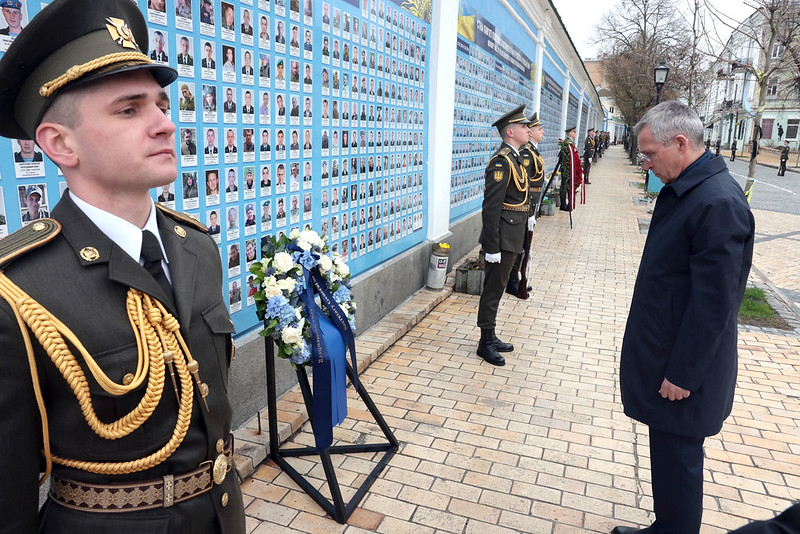
Will NATO collapse and disappear? It is far more likely to continue to exist than to dissolve. Its military shortcomings do not change its political values.
That said, Russia selected war over peace for the reasons mentioned above. None of the problems mentioned has disappeared. NATO is still weak. The internal discord within the US, the EU, and NATO is temporarily – and only partly - suppressed in the face of an imminent threat.
These problems are:
- fundamental discord over NATO’s level of ambitions;
- lack of common strategy;
- lack of political will and military capabilities;
- Europe's continued failure to invest in security and defense;
- the USA's failure to meet its commitment in Europe;
- and not least, the lack of coherence – the not so shared values and principles – between the member states.
Western discord is growing, not abating, as the “tsunami of ripple effects” from the war is fuelling a transformation of the political landscape in Europe.
The League of Nations was replaced by the UN in 1945 because it failed to prevent World War II. The UN has, unfortunately, also proven itself unfit for purpose. Many countries – including the latest victim of a war of aggression – are calling for its reform.
Like the UN, NATO has also failed. Having succeeded in preserving peace for nearly 65 years, it failed to respond to 15 years of Russian “tests” of its political will and military capacity. It failed – and still fails - to acknowledge that it is exposed to a broader confrontation. It failed to understand Russia and its long-term preparations for a full-scale war. The Alliance failed to invest in security and defense. It, not least, failed to deter Russia and, when deterrence failed, to live up to its commitments.
If you take things for granted, you risk losing it.
As previously stressed, NATO deterrence is decided in Moscow. NATO’s future, however, is decided in Washington.
The moment the US loses its patience over Europe's unwillingness to invest in security and defense and stops believing it is possible to reform the Alliance – OR – the moment it turns even more inward-looking and decides to abandon Europe altogether, NATO will be history.
Both the US and Europe have taken NATO for granted for the last three decades.
Failing to prepare for war is a strategic mistake. Failing to prepare to fight the war ten years after it started is a sign of gross incompetence and, potentially, irrelevance.
The question is: are the US and Europe able to re-establish cohesion? Is it at all possible to fundamentally reform NATO? Or would it be easier to simply close it down and establish a new Alliance?
A new military Alliance would allow the US and Europe to start fresh and exclude the countries that lack the political will to contribute to joint defense efforts.
If it were to happen, which countries would be invited to join the US, the UK, and Ukraine in a new military alliance?
Related:
- Why isn’t the West equipping Ukraine to win the war?
- The eight signs of discord within NATO
- Why a humanitarian intervention in Ukraine is in NATO’s interest
- What NATO should do
- For the sake of European stability, NATO needs to intervene in Ukraine: Opinion

